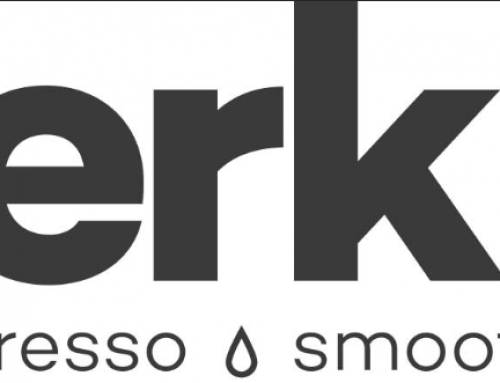1 in 5 people in the UK have a disability. That’s a huge proportion of the population that are often ignored during the planning, designing and installation of charging stations. As we get closer and closer to the 2030 target of all new car sales being electric, there is no question as to whether charging stations need to be accessible to all. No one can be left behind in the e-mobility revolution!
This week I had the pleasure of speaking with Catherine Marris from Motability, the national disability charity. We discussed the main barriers when it comes to disabled people charging their EVs, how these barriers can be overcome, what Motability are doing to ensure charge points are accessible to everyone, and how we can play our part in encouraging diversity within the e-mobility and more broadly the CleanTech sector.
What led you to work within the charity sector?
I have always volunteered from a young age, and always had the desire of wanting to make a difference. Politics felt very individualistic to me, whereas working for charities felt like you can work towards a specific mission as part of a team, I really enjoy that.
To date my entire career has been in the charity sector. I’ve worked in an ageing charity, focussing on innovative ways to empower older people and increase independence, and I also worked at a children’s charity, the NSPCC, in their scale up unit. I researched new markets for children’s services, to enable more children to benefit from best practice. I’ve always been interested in this kind of innovation and social impact space.
My passion comes from finding that intersection of social impact and innovation, whether that’s children getting the right care, older people feeling empowered, or disabled people getting access to transport solutions. These are all passions of mine.
What led you to join the E-mobility sector?
I think what’s really attracted me to the E-mobility space is the opportunities. To me, it felt like an area that’s changing, where we can design inclusively from the start and change things for the next 20 – 30 years to come. There’s a huge amount of infrastructure, vehicles, and ways of getting around that are going to be completely different a decade from now. This brings huge opportunity to do it right, rather than retrofitting everything.
Since joining 12 months ago, I’ve buried my head in the ‘electric vehicle sand’, where I’ve learnt everything I could! I wanted to make sure that I could take advantage of this opportunity, and that we as a charity can make a difference. For me, that is the attraction to E-mobility.
What is Motability?
Motability is a national disability charity, well-known for the Motability Scheme, where disabled people can exchange mobility benefits for a lease on a vehicle, powered scooter, or powered wheelchair. There are over 600,000 people on the Motability Scheme ever year, making it a significant transport solution.
We have been trying to ensure, that as the world transitions to electric vehicles, no one gets left behind. We started with a focus on public charging because we know that a lot of disabled people won’t be able to charge at home because of their particular home parking situation. A lot of public charging infrastructure has heavy cables, high curbs, and confusing interfaces. It’s quite a big shift from petrol stations, where there is usually assistance on hand, the pumps are quite light, it only has to happen in one location as opposed to charging which takes place everywhere in many different ways.
Most of the work we have been doing in this space has focused around setting national standards for accessibility. Focusing on what ‘accessible charging’ means, how can we define it really clearly so that charge point providers, installers, manufacturers, and local authorities know what changes they need to make, to make charging stations accessible. We are doing those national standards now through the British Standards Institution, in partnership with the Department for Transport.
We are also doing a lot of research, finding innovators in this space to come up with new concepts and designs for accessible charging. We recently did 4 months of user engagement working with another charity called Designability, where we worked with disabled people to identify what works and what doesn’t work for them. I think it’s about understanding the problems disabled people face and finding solutions to them, so they feel heard in this transition.
How will creating a standard for charge points assist with accessible charging?
We are running a standards process through the British Standards Institution (BSI), in partnership with government. Once we have accessible charging standards in place, this will clearly define for industry what accessible charging should look like. Although standards are voluntary, a lot of people follow them anyway because they want to be in line with best practice. And if uptake isn’t good enough, we could one day consider pushing for stronger enforcement measures.
What are the main characteristics that need to be changed with charging infrastructure?
This is where our research with Designability has been helpful. We have identified a long list of accessibility issues, but only by testing those with disabled people were we able to identify which were the most important. One issue that comes up all the time is the cable – it’s really heavy. We know that there are lots of reasons for it being this heavy so it’s difficult to make them lighter. If you have a good cable management system or an ‘arm’ that takes most of the weight, that could really help, particularly in the case of rapid chargers.
Another issue that came up is having the charge point covered, if you are in a wheelchair and it’s raining, dealing with a slippery cable will be difficult.
Often more thought is required about the layout of the charge point/charging station relative to the bay so if you just think about a wheelchair user’s journey, getting out of that car, then trying to get up on a really high curb, and then you are in front of the charge point falling off the curb because the charge point is right up against the curb. That entire space hasn’t been thought through in an accessible way. That’s one of the main things we are seeing that its sometimes more about the layout of the bays than the charge point itself.
There are also ways to make disabled people feel safer, having adequate lighting and CCTV. This crosses over with a lot of women’s safety issues – some women have fed back that they’ve been to charge points in dark corners of a car park and don’t feel safe. So, you can see that if you design inclusively for disabled people, it can have a positive impact for women or older people, or people who are pushing prams and need more space. There’s a lot of things here that can help a broader group of people.
Within E-mobility and more broadly CleanTech, the workforce doesn’t have a great deal of diversity. At Hyperion, we are keen to play our part in improving this, through providing our clients with a more diverse short list of candidates. Do you have any ideas or tips on how we can encourage diverse candidates to work in the E-mobility/CleanTech sector? Or how to make it a more attractive place for disabled candidates to develop/continue their career?
A lot of the time people have the skills to work in E-mobility and CleanTech, but they don’t know much about the sector. One way to increase diversity within the sector would be to employ people based on skills rather than industry knowledge.
The second point is on job adverts – make it very clear that you welcome applicants from all backgrounds and listing disability, for example. I think that helps people feel seen and if you know any disabled people within cleantech that you can highlight I think representation is very important.
Thirdly, is making sure you have a welcoming office, where the space is as inclusive as possible for people with different requirements. Once you get someone into the recruitment process, make it clear to them that the company or charity will make adjustments for the candidate so that they are comfortable in that environment. This is better for companies too in the long term because diversity among the workforce leads to a better understanding of different consumer needs and perspectives, resulting in that company being more competitive.
I say this to lots of people in industry: “wouldn’t it be great to be known as the disability-friendly location to charging – imagine how many more consumers will go to your charging site, and will have a positive experience that’s beneficial for your brand.” It’s the right thing to do, but also commercially it’s a good thing to do. It’s a win – win!
By Emma Beaver


